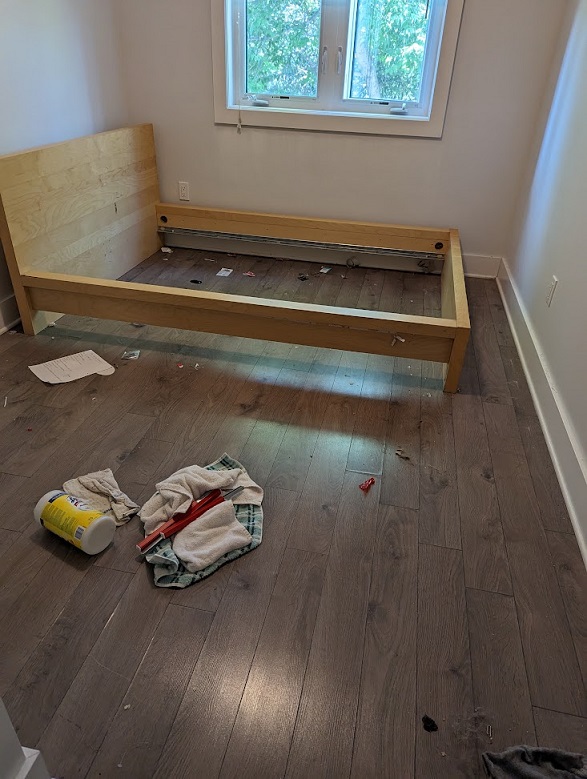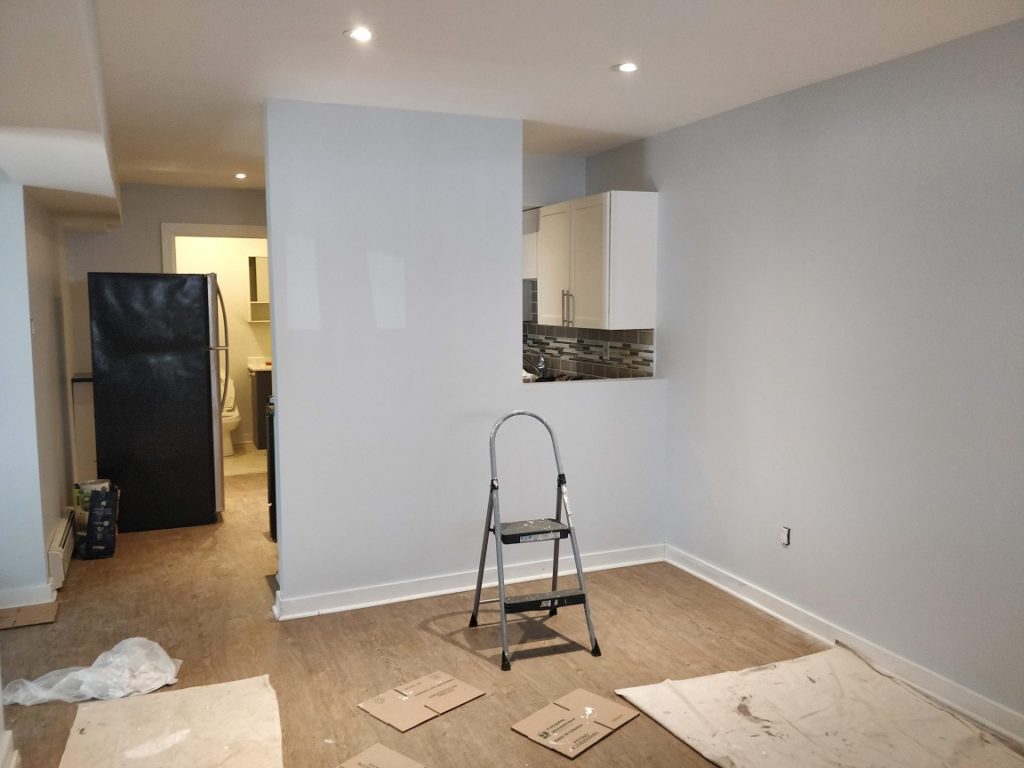In the dynamic world of Canadian rental properties, tenant turnover is an inevitable aspect of property management. However, what many landlords and property managers may not fully anticipate are the various costs associated with this process. From the obvious expenses like repainting and refurbishing to the less apparent costs of advertising and administrative fees, understanding the financial impact of tenant turnover is crucial for maintaining a profitable rental business. In this comprehensive guide, we delve into the various costs that Canadian landlords face during tenant turnover, including repaints, wear and tear fixes, advertising expenses, lease-up fees, and unexpected outlays. By shedding light on these aspects, we aim to provide property owners with the knowledge needed to effectively manage their expenses and maintain the financial health of their rental properties.

Cost of Repainting and Refurbishing
Cost of Repainting and Refurbishing
When a tenant vacates a rental property, one of the first tasks a landlord faces in Canada is repainting and refurbishing. These steps are essential not only to maintain the property’s aesthetic appeal but also to ensure it meets the standards expected by future tenants.
Repainting Costs Repainting a rental unit is a common requirement, especially after long-term tenancies. The cost of repainting can vary widely depending on factors like the size of the unit, the quality of paint used, and the rates of local painters. On average, landlords can expect to spend between $1,000 to $3,000 for a standard two-bedroom apartment. This cost covers labor, paint, and supplies. To save costs, some landlords opt for do-it-yourself (DIY) painting, though this requires time and skill to achieve a professional finish.
Wear and Tear Fixes Over time, rental properties experience normal wear and tear, such as scuffed floors, damaged blinds, or minor wall damages. Addressing these issues is crucial for keeping the property appealing. The cost for these repairs can range from a few hundred to a couple of thousand dollars, depending on the extent of the damage. For example, fixing a damaged hardwood floor in a small area might cost around $200 to $500, while replacing blinds can range from $50 to $200 per window, depending on the quality.
Budgeting for Refurbishing Landlords should also consider the cost of replacing or repairing appliances, fixtures, and fittings. This might include servicing the heating system, replacing old light fixtures, or updating bathroom fittings. Budgeting about 10-15% of the annual rental income for maintenance and refurbishment is a practical approach for many landlords. This fund helps in covering these expenses without causing financial strain.
Tax Implications In Canada, the costs associated with repainting and refurbishing a rental property can often be deducted as current expenses or capital expenses, depending on their nature. Current expenses are recurring expenses for repairs and maintenance, while capital expenses are for improvements that extend the life or value of the property. Understanding these distinctions is important for tax purposes.
By effectively managing the costs of repainting and refurbishing, landlords can ensure their property remains competitive in the rental market while maintaining its value over the long term.
Advertising and Marketing Expenses
Advertising and Marketing Expenses
Attracting new tenants to a rental property in Canada involves strategic advertising and marketing. This is a crucial step in the tenant turnover process, and understanding the associated costs can help landlords budget effectively and minimize vacancy periods.

Costs of Advertising Vacant Units Advertising costs can vary significantly based on the platforms used and the extent of the advertising campaign. Common advertising channels include online rental listing websites, social media, local newspapers, and property management companies. Prices for listing a property on popular rental websites in Canada can range from free to around $100 per listing, depending on the site’s features and visibility options. Social media advertising can also be a cost-effective way to reach potential tenants, with the possibility of setting a budget as per the landlord’s discretion. Vacant units have additional costs with the Canada’s Underused Housing Tax (UHT).
Professional Photography and Virtual Tours Investing in professional photography or creating virtual tours can significantly enhance the appeal of the listing. Professional photography costs can range from $100 to $500, depending on the photographer and the number of photos. Virtual tours, offering a 360-degree view of the property, can cost anywhere from $200 to $600. These investments often lead to quicker rentals and can justify their initial costs by reducing vacancy periods.
Property Management Companies Some landlords choose to hire property management companies to handle the marketing and tenant screening process. While this adds an additional cost, it often results in a more efficient and professional marketing approach. Property management companies typically charge a percentage of the monthly rent, generally around 8-10%, for their full suite of services, including marketing.
Effective and Budget-Friendly Marketing Strategies Landlords can also employ budget-friendly marketing strategies such as word-of-mouth referrals, posting on free community boards, or leveraging existing tenant networks. These methods can be effective and involve minimal to no cost.
Importance of a Good Online Presence In today’s digital age, having a strong online presence is essential. Ensuring the rental listing is well-written, with clear information and attractive photos, can significantly improve its effectiveness. Online listings should highlight the property’s best features, location advantages, and any unique amenities.
By understanding and strategically planning for advertising and marketing expenses, landlords can attract the right tenants efficiently and keep their rental properties in demand.
Lease-Up Fees and Administrative Costs
Lease-up fees and administrative costs are critical elements in the tenant turnover process for Canadian rental properties. These fees cover the expenses associated with finding and securing a new tenant and can vary based on several factors, including the services provided and the rental market’s dynamics.

Understanding Lease-Up Fees Lease-up fees are typically charged by property management companies or real estate agents for the services of finding and placing a new tenant. This fee can range from half to a full month’s rent, depending on the level of service provided. The services often include advertising the property, conducting showings, screening potential tenants, and preparing the lease agreement. For landlords who manage properties themselves, these costs can be saved, but it requires time and effort to perform these tasks effectively.
Administrative Costs in Tenant Turnover Administrative costs encompass various smaller expenses that add up during the turnover process. These might include the cost of credit and background checks on potential tenants, which can range from $25 to $50 per check. Other administrative expenses might involve preparing and printing lease agreements, updating contact information with utility companies, and time spent coordinating repairs and viewings.
Streamlining Administrative Processes To manage these costs effectively, landlords can streamline their administrative processes. Utilizing digital tools for tenant screening, electronic lease agreements, and online rent collection can reduce both time and financial expenditure. Moreover, keeping a detailed checklist for each turnover ensures that no step is overlooked, thus preventing last-minute expenses.
Budgeting for Lease-Up and Administrative Costs It’s advisable for landlords to budget for these costs as part of their annual operating expenses. Setting aside a certain percentage of the rental income, typically between 5-10%, can help cover these expenses without impacting the property’s profitability.
Tax Deductions In Canada, lease-up fees and certain administrative costs associated with renting out a property can be tax-deductible. It’s important for landlords to keep detailed records of these expenses for accurate tax reporting and to consult with a tax professional for advice tailored to their specific situation.
Understanding and effectively managing lease-up fees and administrative costs are essential for maintaining a profitable rental property in Canada. By budgeting appropriately and utilizing efficient administrative practices, landlords can minimize these costs while ensuring a smooth transition between tenants.
Unexpected Expenses and How to Mitigate Them
Unexpected Expenses and How to Mitigate Them
Tenant turnover in Canadian rental properties often comes with unforeseen expenses. These unexpected costs can strain a landlord’s budget if not properly planned for. Understanding these potential expenses and implementing strategies to mitigate them is essential for successful property management.
Common Unforeseen Costs Some of the unexpected costs landlords might encounter include emergency repairs, such as plumbing or electrical issues discovered during the turnover process. Other examples include the need for more extensive repairs than initially anticipated, last-minute cancellations by new tenants, or legal fees if disputes arise.
Emergency Repairs Emergency repairs can be costly, particularly if they involve major systems like heating, plumbing, or electrical work. The cost of such repairs varies greatly but can easily run into thousands of dollars. To mitigate these costs, landlords should have a contingency fund set aside, typically around 10-20% of the annual rental income.

Dealing with Last-Minute Cancellations Last-minute cancellations by tenants can lead to longer vacancy periods, resulting in lost rental income. To reduce the risk of cancellations, landlords can conduct thorough tenant screenings, require a reasonable deposit, and establish clear communication channels with potential tenants.
Legal Expenses Legal expenses can arise from disputes with tenants or compliance issues. While these costs can be significant, landlords can minimize their likelihood by staying informed about tenant laws in Canada, maintaining clear and professional relationships with tenants, and keeping all agreements and communications documented.
Regular Property Inspections Conducting regular inspections of the property can help identify potential issues before they become major problems. This proactive approach allows for timely repairs and maintenance, reducing the chances of emergency situations.
Insurance Coverage Having adequate insurance coverage for the rental property is crucial. Landlords should ensure their policy covers significant damages and liability, which can protect against substantial unexpected expenses.
Creating a Budget for Unexpected Costs Incorporating a budget line for unforeseen expenses in the annual financial plan for the rental property is a prudent strategy. This ensures that when unexpected costs arise, they don’t significantly disrupt the property’s financial stability.
By understanding and preparing for these unexpected costs, landlords can effectively manage their rental properties and safeguard their investment against potential financial setbacks.
Proactive Management for Cost-Effective Tenant Turnover
In conclusion, managing the cost of tenant turnover in Canadian rental properties requires a proactive and informed approach. Understanding the various expenses involved, from repainting and refurbishing to advertising, lease-up fees, and unexpected costs, is crucial for landlords aiming to maintain the profitability of their investments. By budgeting appropriately, utilizing efficient administrative practices, and preparing for unforeseen expenses, property owners can navigate the challenges of tenant turnover more effectively.
The key to successful rental property management lies in balancing cost-efficiency with maintaining high standards. Investments made in quality refurbishing, effective advertising, and thorough tenant screening can pay off in the long run by attracting reliable tenants and minimizing vacancy periods. Additionally, staying up-to-date with Canadian tenancy laws and maintaining a good landlord-tenant relationship can prevent legal disputes and ensure a smoother turnover process.
Finally, always be prepared for the unexpected. Setting aside a contingency fund and having adequate insurance coverage are essential practices that safeguard against unforeseen expenses. With these strategies in place, landlords can achieve a more stable and profitable rental property business, even in the face of the inevitable tenant turnover.
